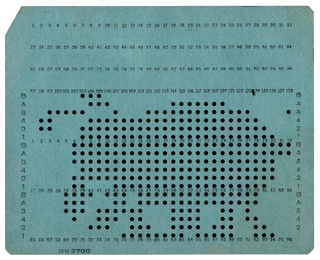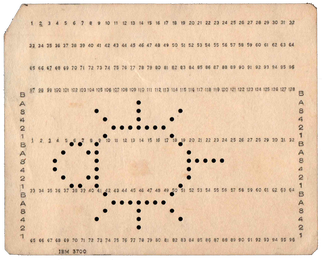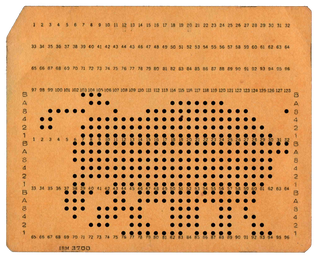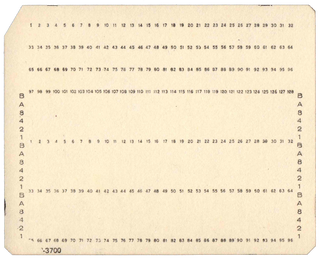In 1969 IBM Introduced the System/3 line of computers, which were designed to be smaller and more affordable than their ancestors. As part of this IBM offered a new 96-column card, which had an increased data density over the 80-column card used with previous IBM computers. With the 96-column card more efficient encoding-schemes were introduced to allow for the same data that had previously consumed 12 rows on an 80-column card, to be represented in 6 rows for each column.
Similar to their predecessors the 96-column card had a printable area at the top where the cards punched contents could be printed in plaintext. These cards also allowed punching of the printable area to yield another 32 columns of space, making these cards capable of holding 128 columns of 6-bit data. However, this was rarely used, and was not available with some later 8-bit encoding schemes which reused the top area of the card to allow the punching of 96-columns of 8-bit data.



